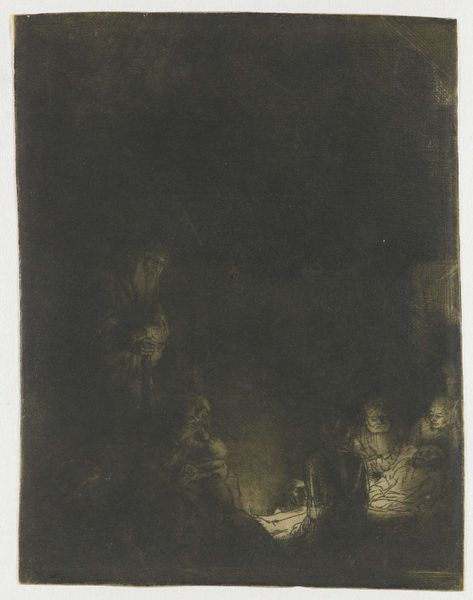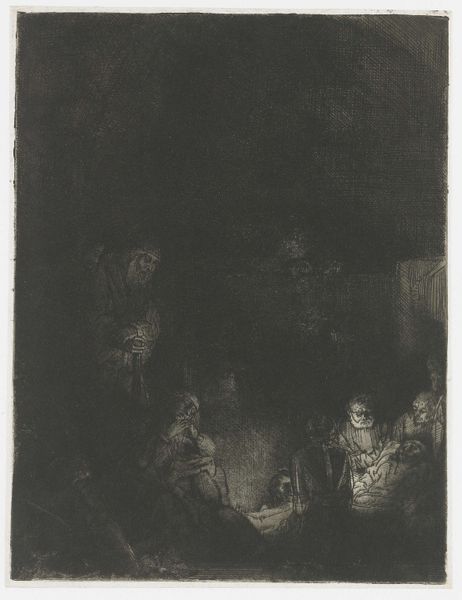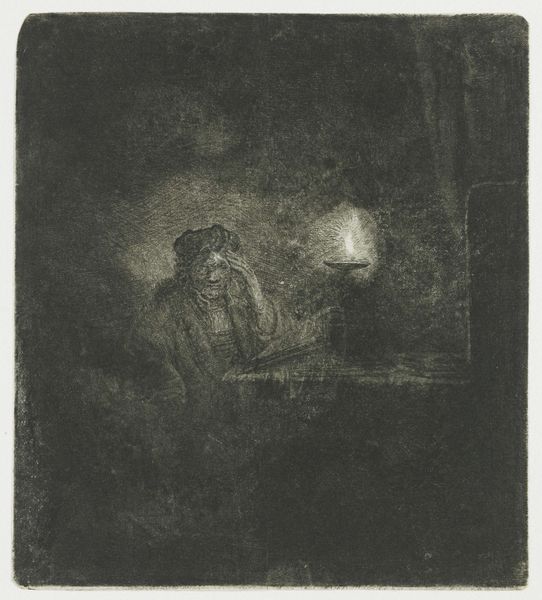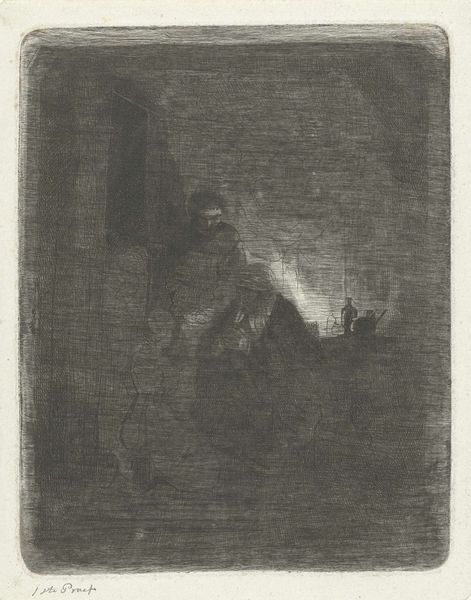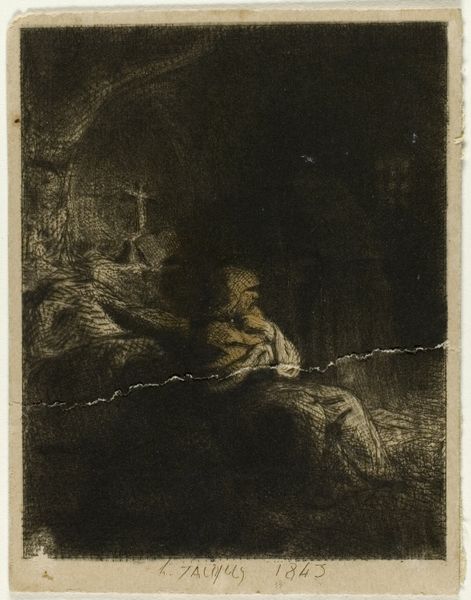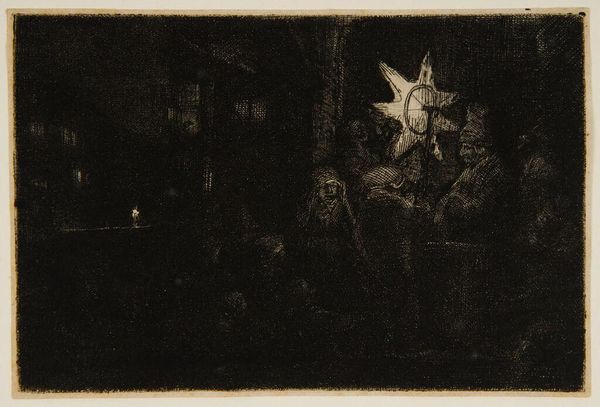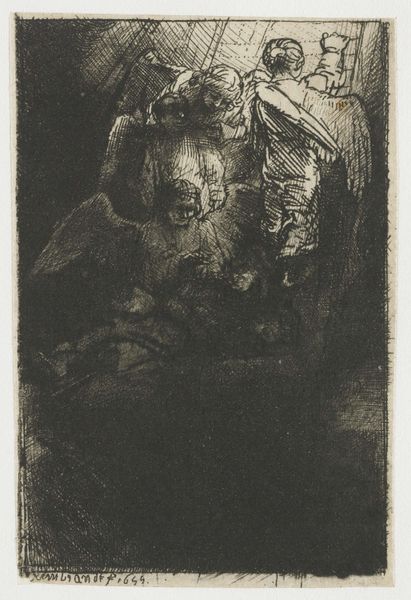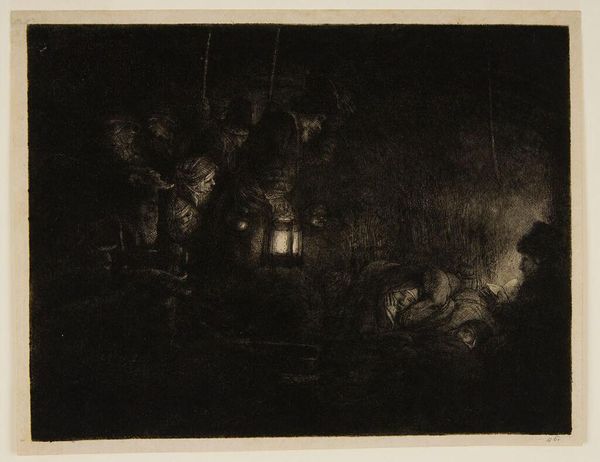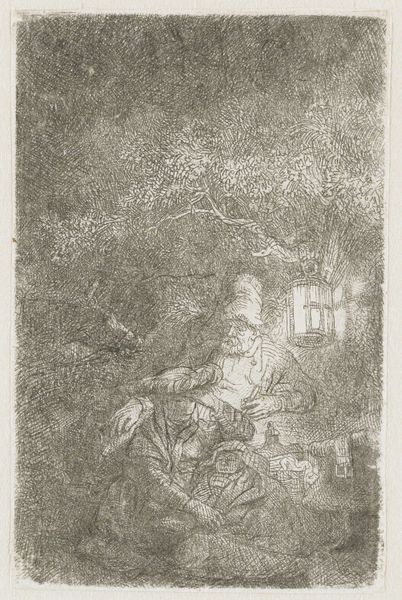
print, etching
#
baroque
# print
#
etching
#
figuration
#
chiaroscuro
#
history-painting
Dimensions: height 210 mm, width 160 mm
Copyright: Rijks Museum: Open Domain
Curator: This is "The Entombment" by Rembrandt van Rijn, dating from around 1654. It's an etching, and we're lucky to have it here at the Rijksmuseum. Editor: It's intensely dark, almost claustrophobic. You can barely make out the figures. I’d describe the mood as heavy, thick with sorrow. Curator: Absolutely. The darkness, what we call chiaroscuro, is essential to the symbolism. The deep shadows represent both the tomb and the spiritual darkness of the moment. Think of the image of descent in so many mythologies and religious beliefs. Editor: And he achieves that so effectively through the printmaking process. You can almost feel the pressure of the plate, the weight of the metal bearing down to create those stark contrasts. How many states are known for this print? I imagine he reworked it extensively. Curator: Several states exist, yes, allowing Rembrandt to refine his use of light and shadow, deepening the emotional impact. Consider the positioning of the figures surrounding the body—each is a study in grief and resignation. Note the faces, subtly lit, conveying personal anguish. Editor: And it’s not just faces. Look at the textiles; that shroud, for instance. There’s so much information conveyed through the materiality of the print: paper, ink, and the physical act of pressing those two together. How would this have been circulated at the time? To whom was this image accessible? Curator: Prints such as this would have been sold individually, allowing for wider dissemination of his work among collectors and connoisseurs. These images carried profound theological meaning but also social and artistic cachet. It allowed for accessibility, but limited due to economical constrictions. Editor: Interesting, that dynamic between spiritual message, artistic skill, and commercial exchange. I often think about the workshops where prints like these were made. The labour...the artisanal expertise, not just Rembrandt’s vision, went into creating this. Curator: A beautiful observation. Ultimately, it speaks to the lasting power of this small, yet intensely evocative image, a visual symbol of loss and, potentially, of hope. Editor: Indeed. The layers of human touch, both physical and emotional, embedded in the materials and imagery... It truly encapsulates a profound moment.
Comments
No comments
Be the first to comment and join the conversation on the ultimate creative platform.
